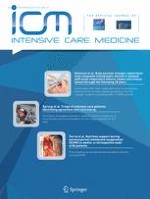Published in:

01-11-2013 | My Paper 20 Years Later
Body position changes redistribute lung computed-tomographic density in patients with acute respiratory failure: impact and clinical fallout through the following 20 years
Authors:
Luciano Gattinoni, Antonio Pesenti, Eleonora Carlesso
Published in:
Intensive Care Medicine
|
Issue 11/2013
Login to get access
Abstract
In patients with acute respiratory distress syndrome (ARDS), in supine position, there is a decrease of inflation along the sternum vertebral axis, up to lung collapse. In 1991 we published a report showing that, in ARDS patients, shifting from supine to prone position led immediately to the inversion of the inflation gradient and to a redistribution of densities from dorsal to ventral lung regions. This led to a “sponge model” as a wet sponge, similar to a heavy edematous lung, squeezes out the gas in the most dependent regions, due to the weight-related increase of the compressive forces. The sponge model accounts for density distribution in prone position, for which the unloaded dorsal regions are recruited, while the loaded ventral region, collapses. In addition, the sponge model accounts for the mechanism through which the positive end-expiratory pressure acts as counterforce to oppose the collapsing, compressing forces.
The final result of proning was that the inversion of gravitational forces, together with other factors such as lung-chest wall shape-matching and the heart weight led to a more homogeneous distribution of inflation throughout the lung parenchyma. This is associated with oxygenation improvement as the dorsal recruitment, for anatomical reasons, prevails on the ventral de-recruitment. The more homogeneous distribution of inflation (i.e. of stress and strain) decreases/prevents the ventilator-induced lung injury, as consistently shown in animal experiments. Finally, and a series of clinical trials led to the conclusion that in patients with severe ARDS, the prone position provides a significant survival advantage.





